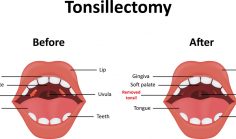The varicella-zoster virus causes chicken pox and shingles. Shingles is characterized by a painful, burning rash accompanied by nerve pain. Shingles can only be caused by previous exposure to the varicella-zoster virus, the virus that causes the chickenpox. Once introduced into the body, the varicella-zoster virus remains dormant in the body for the rest of a person’s lifespan, even if treatment for the initial infection was successful. A weakened immune system can allow the virus to re-activate itself, causing the characteristic burning rash of shingles.
Unlike chickenpox, shingles is not contagious. A person with shingles can only pass the varicella-virus on to a young individual who has never been exposed to the virus before. That individual will develop chickenpox, not shingles. An estimated 25% of the adult population will develop shingles during their lifespans. Shingles usually occurs in individuals over the age of 50 or in younger individuals with an otherwise compromised immune system. As age increases, so does the severity of the symptoms. According to the National Institute of Health, the “burden of illness” is double among individuals greater than 70 as compared to those 60-69 years old.
A variety of treatments are available to help lessen the severity of shingles symptoms, but there is currently no cure. Most adults affected by shingles will make a full recovery, though many will develop a condition known as post-herpetic neuralgia (PHN), which results in persistent nerve pain lasting months or years after the initial rash.











